TERRY SHERWOOD looks at the life and film career of top English screen villain Tod Slaughter
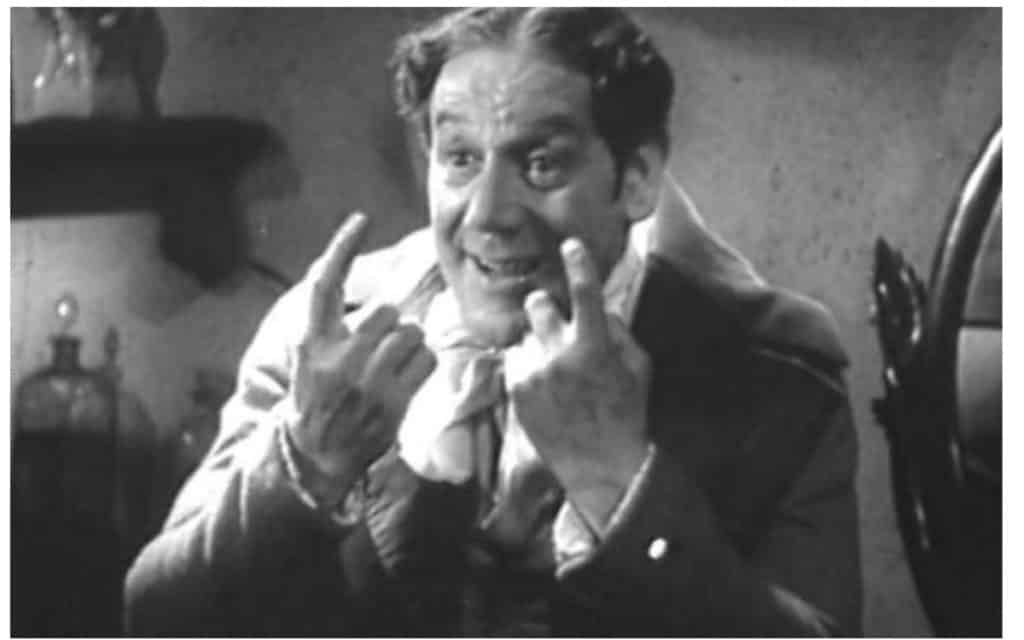
Tod Slaughter: Stages of a Madman
Everything has some sort of beginning.
Born Norman Carter Slaughter in Newcastle upon Tyne in 1885, Tod was a theatre manager and leading man in character roles of the day.
Slaughter, or Mr Murder as he was eventually known, took over the Elephant and Castle Theatre in London, where he revived the Victorian Blood and Thunder melodramas that played so well to the masses.
Critics, on the other hand, hated them.
Those titles – Mary Marten, Sweeney Todd , Jack Shepard, and The Silver King – all played to huge audiences that included sophisticated West end theatre goers.
They were taken with Slaughter’s presence on the stage and force of acting. The blood and carnage flowed freely on the stage.
He changed his name to Tod Slaughter in 1925.
The company was so successful it used local personalities in smaller roles. Theatre companies tend to disappear quickly, and the Elephant and Castle closed its doors in 1927, despite local protests to keep it open and its audience numbers. A brief change of occupation to chicken farmer didn’t last long and Slaughter was back on the stage in the roles that would define him.
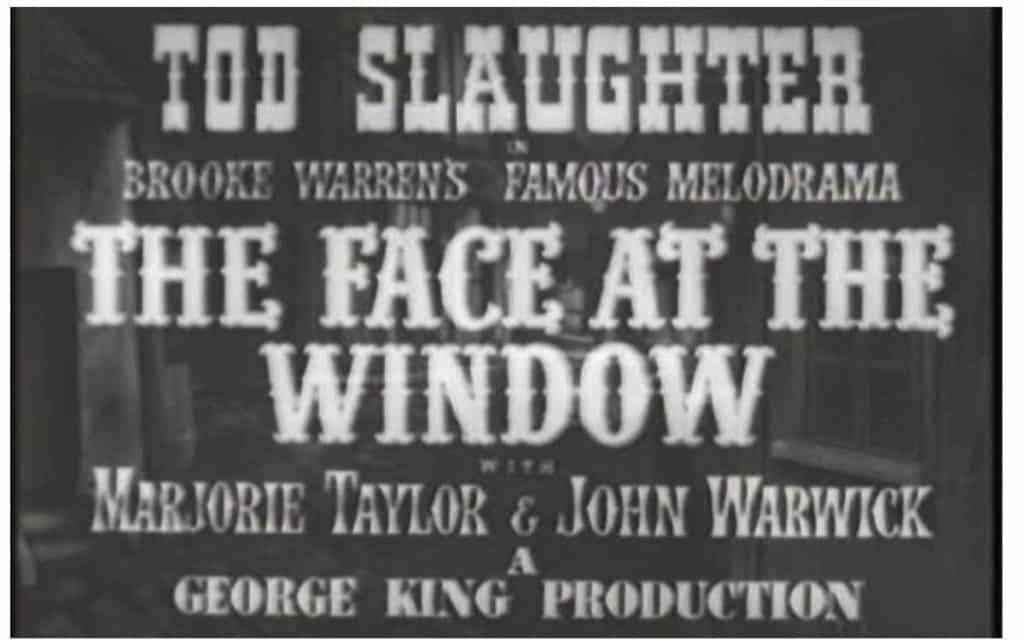
The Camera Beckons
The film roles began with Mary Marten, or The Murder in the Red Barn (1935), with Slaughter in the title role as the evil doer.
At the time, women were helpless and acted upon, along with lantern jawed men who try to win the day.
The film featured obvious theatre trappings, such as an on stage announcer introducing the characters as they paraded across the stage.
The camera was static and performances were over the top with leering, and face and hand gestures of the stage that would set the pattern.
Tod Slaughter stood out with his larger than life grinning and strident tones. He also surrounded himself with lesser talents.
Sweeney Todd (1936) is bookended by a ridiculous vignette of a well to do man in a barber shop in the thirties.
The fellow runs out of the shop with white apron and shave cream still on his face to hop on a bus in front of people on the street.
The pattern of excess was set for Slaughter’s film legacy in the horror genre.
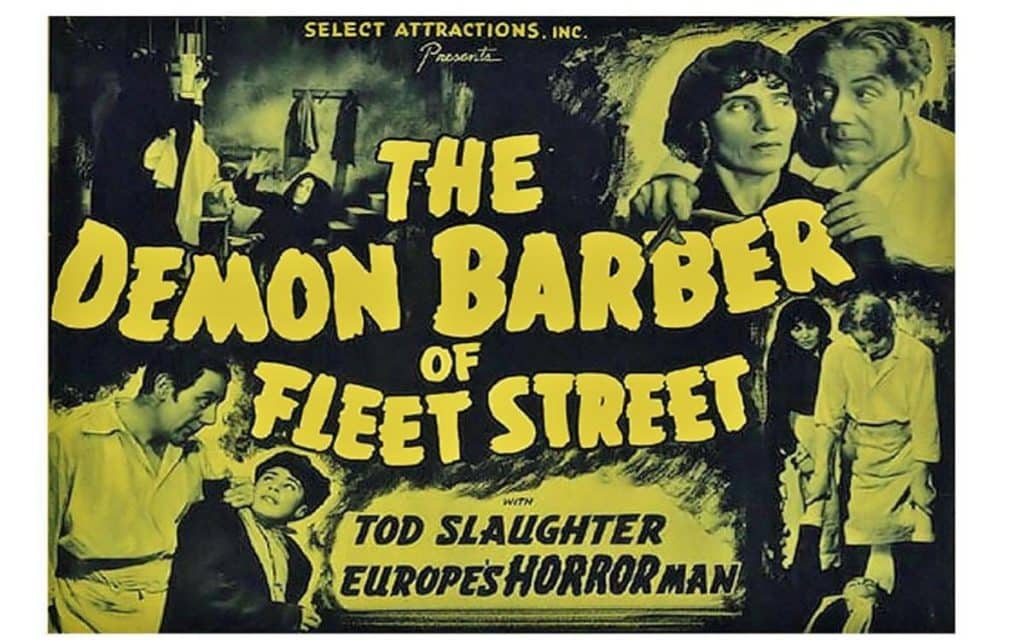
A Career in the Blood
Other pictures followed rapidly as the public’s appetite rose: The Crimes of Stephen Hawke (1936), It’s Never Too Late To Mend (1937), The Ticket of Leave Man (1938), The Face at the Window (1939), and Crimes at the Dark House (1940).
Most were made quickly and cheaply to fulfil a government requirement that a certain portion of all films distributed by British studios had to be British made.
Many were forgettable and low-quality, but still produced a huge profit.
Tod Slaughter’s fame grew.
The wars years curtailed film production due to silver nitrate scarcity and the tax put on film companies to use only what they needed as no waste was tolerated.
After The Carnage
Tod Slaughter’s legacy is open to debate; even if he had any influence on what came later.
Slaughter’s body of work – no matter how poor it may seem by today’s standards – was a bridge between the Victorian blood and thunder melodramas and the gore and flash of Hammer Studios in the early fifties.
The film work was censored as often there would be cutaway edits or fade to black during the more harrowing moments.
The ‘X certificate’ for audience restriction had not yet been created.
Tod Slaughter pointed the way to gore, and this in turn became taboo subjects in horror.
He was the first to use gimmicks, such as having doctors and nurses in the theatre during performances in case someone fainted. They were called upon, too.
Tod would often go to the theatre bar during the interval in full make up with bloody apron (as in the case of Sweeney Todd) and sit muttering and ordering drinks.
Not a soul would go near him and a showman’s mystique was created. William Castle and his electric shock seats during the fifties followed.
Tod Slaughter’s films helped launch the career of producer and writer John Gilling. Gilling subsequently joins forces with Hammer films and propels the acting career of Eric Portman.
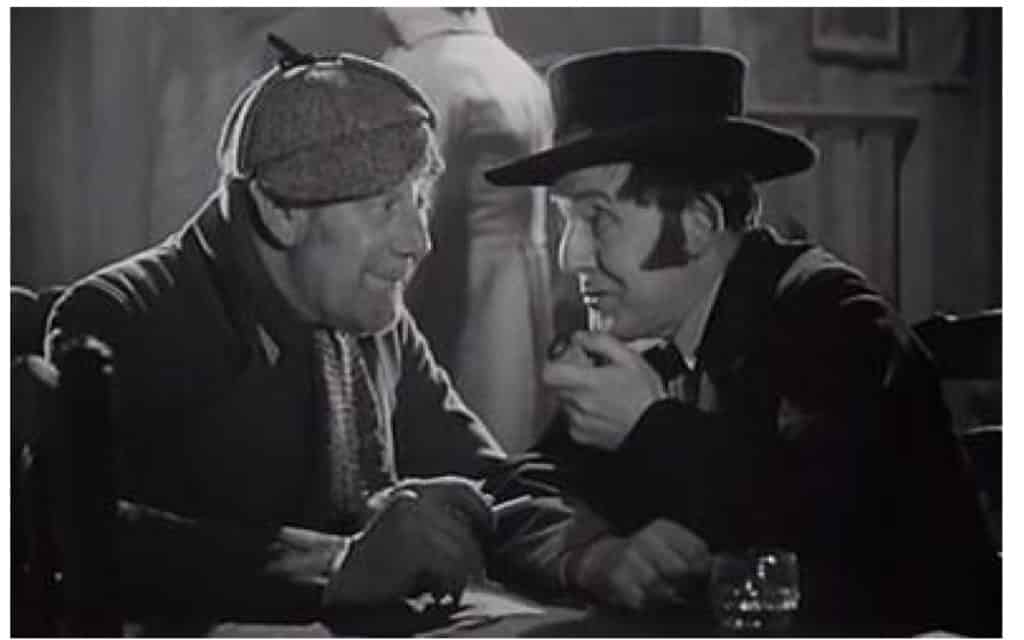
The Curtain Falls
Tod Slaughter continued to work in film till the mid-fifties, finding that the market had changed when he declared bankruptcy.
He appeared in Molière’s The Gay Invalid opposite future horror star Peter Cushing.
Tod Slaughter passed away of a coronary thrombosis in Derby in 1956, which was also the year Bela Lugosi died.
His work slipped in to obscurity.
Many film people today have little or no regard for Tod Slaughter’s work in film or the theatre.
Take him for what he is which was almost prototype for today’s grinning slasher.
In 2018, the UK Horror magazine, The Dark Side, in conjunction with We Belong Dead magazine and the Slaughter Awards Committee, started annual awards named after Tod to deserving people within various categories in the horror genre.
Tod Slaughter’s face grins again from the stage in the form of the statue.
Seek him out if you can. And if you dare.


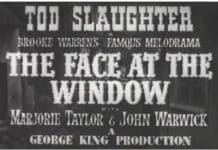

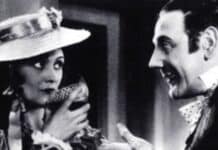

Tod Slaughter was probably neglected, but certainly not forgotten. I wrote a first article on him in France in 1973 (in “L’Ecran Fantastique”, a magazine still published in 2020), then another in the British mag “Headpress”, then another one in Germany in “Splatting Image”, then another French article in “Ciné Zine Zone” (more specifically upon “The Greed of William Hart”), and I recently wrote the entire commentary for the US BluRay (from Kino Lorber) of “The Face at the Window”, and since 1964 I’m collecting stills, posters, lobbies, videos, foreign releases, etc. from ANY of Tod’s movies and TV episodes, like 9 episodes to date (from 13) of his “lost” series “Inspector Morley Investigates”… Some of Tod’s movies were released in Belgium, France, Italy, Mexico, Argentina !